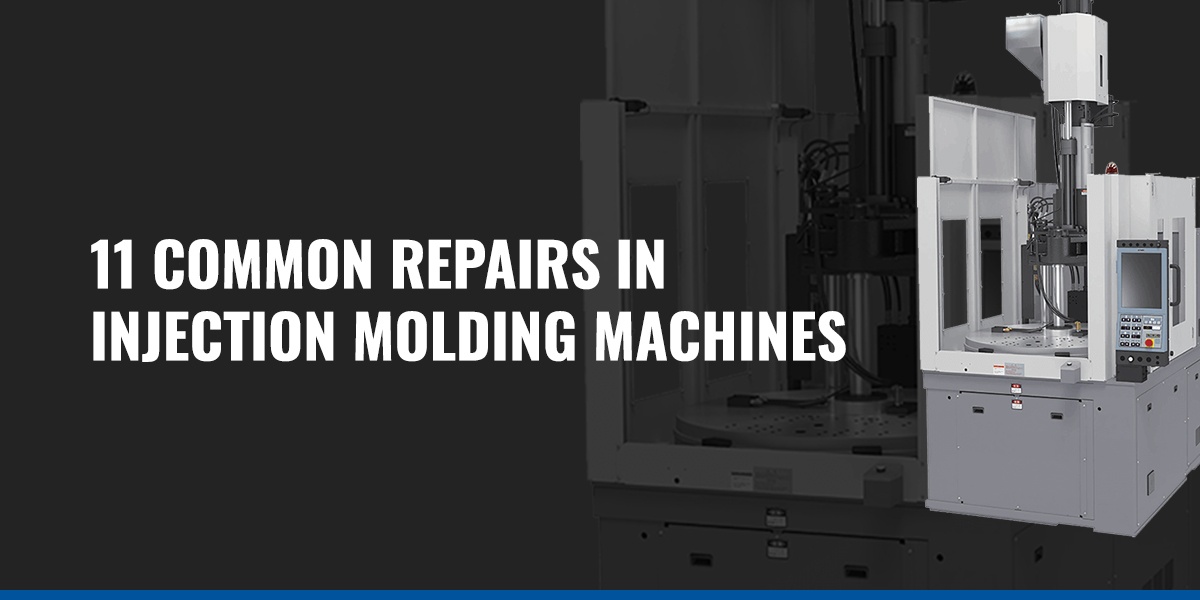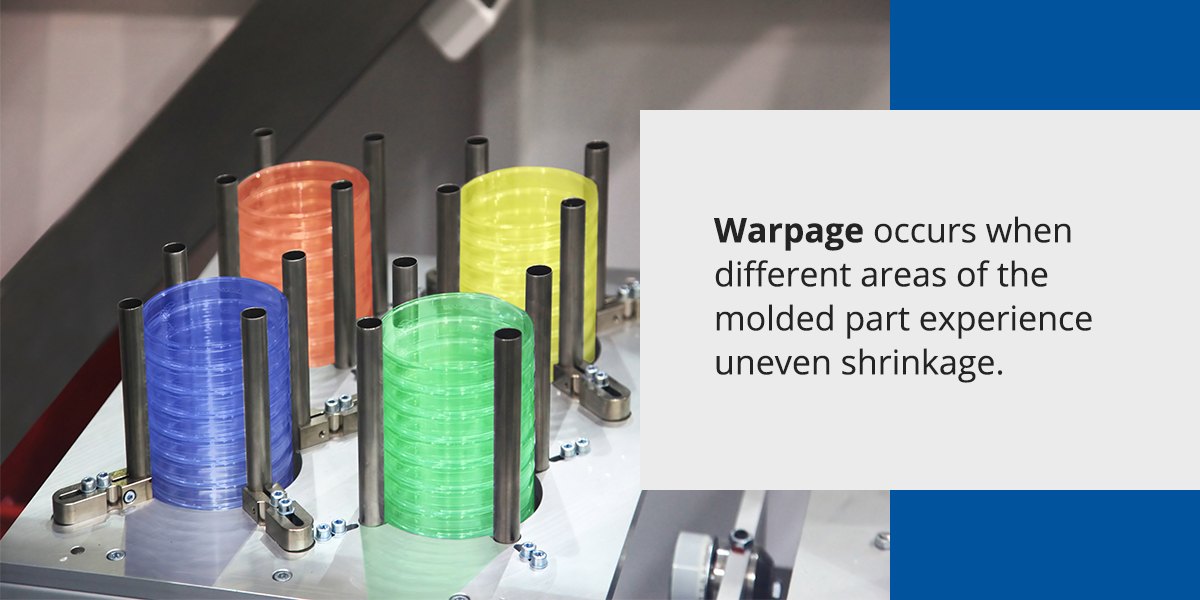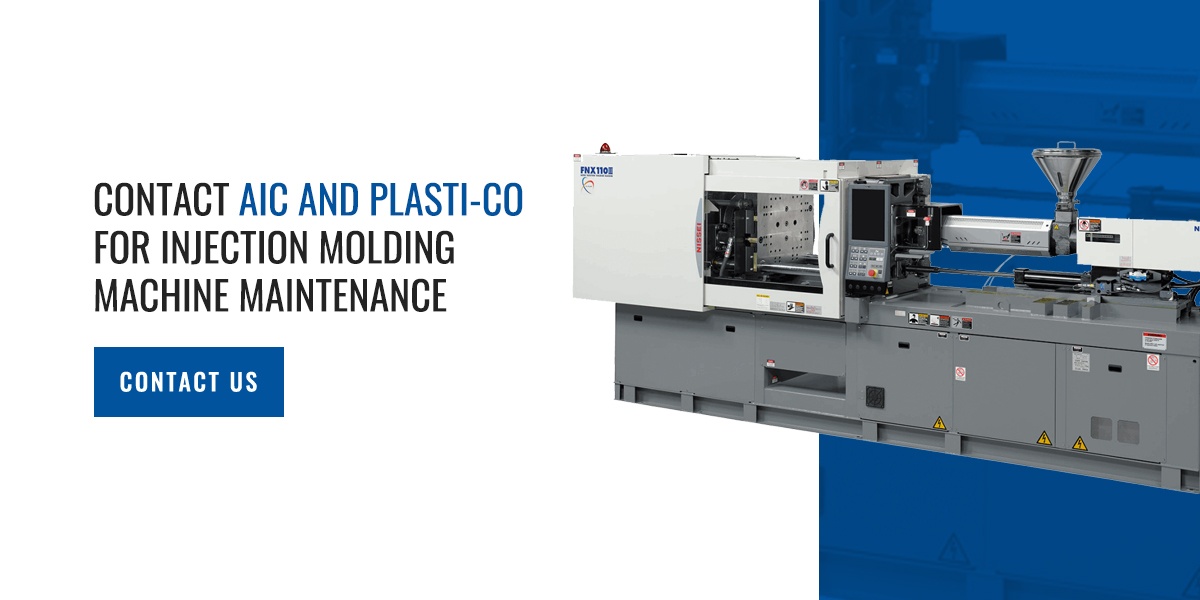Molding machine problems and other maintenance issues can cause severe financial losses. When production is interrupted by injection molding problems, timely and cost-effective injection molding machine repair will keep these losses low.
Our list of basic problems and common first option repairs can help boost productivity. If your molding machine problems are persistent, rely on your nearest injection molding machine service to assist you with any of the following issues and beyond.
1. Short Shots
Short shots occur where the molten plastic cannot completely fill the mold cavity or cavities. When the molding shot falls short, the finished product appears incomplete.
Possible causes include:
- Low mold or material temperature
- Insufficient injection pressure and fill speed
- Low fluidity of raw materials
- Overly long flow distances
- Inadequate gas venting
- Improper gate and runner system design
- Unbalanced structural design
- Insufficient amount of molten plastic
- Insufficient holding time
Basic Repairs for Short Shots
Use these repair methods to solve short shots:
- Raise the mold or material cylinder temperature.
- Increase the injection pressure and fill speed.
- Select a more fluid plastic with higher flowability.
- Improve the exhaust system to optimize gas venting.
- Increase the number of gates and runner size to reduce flow resistance.
- Increase the material feed. If the feeding port has reached its maximum, switch to a machine with higher material feed.
Contact Us For Your Injection Molding Repair Needs
2. Burn Marks
Burn marks are rusty or silvery discolorations on the molded part’s surface. The degradation of the molten plastic may cause these marks during the injection process.
Other possible causes include:
- High mold or material temperature
- Excessively high injection pressure and fill speed
- Improper gate and runner system design
- Inadequate gas venting
Basic Repairs for Burn Marks
Troubleshoot these injection molding problems with these options:
- Reduce the mold or material cylinder temperature.
- Reduce the injection pressure and fill speed.
- Increase the size of the gate and runner system.
- Improve the exhaust system to optimize gas venting.
3. Brittleness
When finished parts show crack formations under low stress or flexing, the product becomes deficient due to brittleness.
Possible causes include:
- High mold or material temperature
- Contaminants on the mold surface
- Use of non-compatible color concentrates
- Arid conditions
- Improper gate and runner system design
Basic Repairs for Brittleness
Take these steps to prevent brittleness in your molded products:
- Reduce the mold or material cylinder temperature.
- Increase the injection pressure to improve the plastic strength.
- Set appropriate dry conditions before plastic injection molding.
- Increase the size of the gate and runner system.
4. Jetting
Jetting is when the wavy folds of the jet stream create visible lines on the surface. This defect occurs when the molten plastic solidifies without contacting the mold sufficiently.
Possible causes include:
- Low mold or material temperature
- Excessively fast fill speed
- Low fluidity of raw materials
- Improper gate design
Basic Repairs for Jetting
Make these adjustments to prevent jetting:
- Raise the mold or material cylinder temperature.
- Design the mold so it reduces the fill speed.
- Select a more fluid plastic with higher flowability.
- Increase the gate size to ensure sufficient contact between the molten plastic and the mold.
5. Flash
Flash is a molding defect that appears when some molten plastic escapes from the cavity mold. When this excess plastic cools, it leaves a film-like edge attached to the finished product.
Possible causes include:
- High mold temperature
- Excessively high injection pressure and fill speed
- Insufficient clamping force
- Defective or worn-out molds
- Low viscosity of raw materials
- Contaminants on the mold surface
- Mismatched mold shut-off faces
- Inadequate gas venting
Basic Repairs for Flash
Avoid flash with these options:
- Perform injection molding repairs for optimal mold temperature, injection pressure and fill speed.
- Increase the clamping force to ensure the mold parts remain closed.
- Replace molds when they reach the end of their lifespan.
- Ensure the mold is adequately cleaned and maintained.
- Design the mold to close completely.
- Improve the exhaust system to optimize gas venting.
6. Warping
Warping or warpage is the distortion of molded parts, which can be any twisted, uneven or bent shapes that don’t belong on the finished product. Warpage occurs when different areas of the molded part experience uneven shrinkage.
Possible causes include:
- Low mold or material temperature
- Mismatched core and cavity temperatures
- Insufficient holding or cooling time
- Excessively high injection pressure
- Overly long flow distances
- Uneven wall thickness
- Improper gate design
Basic Repairs for Warping
Help prevent warping with these measures:
- Raise the mold or material cylinder temperature.
- Ensure sufficient cooling time to avoid locking residual stresses into the part.
- Reduce the injection pressure to prevent overpacking at the gate.
- Select a plastic that is less prone to shrinkage. Avoid semi-crystalline materials.
- Design the mold to have a single flow source and uniform wall thickness.
- Increase the gate size or change the gate location.
7. Sink Marks
Sink marks are depressions that develop in thicker sections of the mold surface. These aesthetic defaults appear whenever shrinkage occurs. Thick areas of the finished product are more susceptible to shrinkage because they take longer to cool.
Possible causes include:
- High mold or material temperature
- Insufficient injection pressure
- Insufficient holding or cooling time
- Inadequate cooling mechanism
- Unbalanced structural design
- Improper gate design
Basic Repairs for Sink Marks
Take these steps to avoid sink marks:
- Allow for adequate cooling with lower mold temperature, increased injection pressure and longer holding time.
- Reduce the wall thickness of the thickest areas and minimize the overall aspect ratio.
- Use a corrugated surface where dents are likely to occur.
- Increase the gate size or change the gate location.
8. Weld Lines
Weld lines are a surface defect caused when two or more flow fronts come together during the injection process. Premature partial solidification of the molten plastic leads to inadequate bonding — the primary cause of weld lines.
Other possible causes include:
- Low mold or material temperature
- Insufficient holding time or fill speed
- Contaminants or scratches on the mold surface
- Uneven wall thickness
- Inadequate gas venting
- Improper gate design
Basic Repairs for Weld Lines
Avoid these defects with these methods:
- Raise the mold or material cylinder temperature.
- Increase the fill speed.
- Select a more fluid plastic or one with a lower melting point.
- Design the mold to have a single flow source.
- Improve the exhaust system to optimize gas venting.
- Change the gate location.
9. Voids
Voids are small air pockets trapped within or close to the molded part’s surface. These bubbles or blisters are created from entrapped gas, air or a vacuum.
Possible causes include:
- Uneven solidification of the mold
- Mismatched core and cavity temperatures
- Insufficient injection pressure
- Excessively fast fill speed
- Inadequate gas venting
- Improper gate design
- Incorrect mold alignment of two halves
- Excessive moisture
Basic Repairs for Voids
Prevent air pockets with measures like these:
- Select a more fluid plastic so air can escape more rapidly.
- Increase the injection pressure and holding time.
- Reduce the fill speed.
- Improve the exhaust system to optimize gas venting.
- Change the gate location to the thickest section of the mold.
- Ensure mold parts are correctly aligned.
10. Delamination
Delamination is when the part’s surface can be peeled off layer by layer. These thin surface layers appear like coatings on the molded part.
Possible causes include:
- Contaminants trapped within the plastic
- Mixing incompatible materials
- Excessive use of mold release agents
- Inconsistent material temperature
- Improper gate and runner system design
- Excessive moisture
Basic Repairs for Delamination
Take these steps to prevent delamination:
- Avoid contaminated recycled materials and incompatible mixtures.
- Reduce or eliminate the dependence on release agents.
- Raise the mold or material cylinder temperature.
- Design the mold with smooth turns to avoid sudden flow changes.
- Appropriately dry the plastic before molding.
11. Streaks
Streaks appear when air, water or char is distributed along the part’s surface. Air streaks are matte, white or silvery lines that follow the flow direction. Moisture streaks are rough or porous U-shaped profiles that open against the flow instead.
Possible causes include:
- High mold or material temperature
- Excessively high injection pressure and fill speed
- Contaminants trapped within the plastic.
- Inadequate gas venting
- Entrapped air
- Excessive moisture
Basic Repairs for Streaks
If your molding machine problems are causing streaks, you can:
- Reduce the mold or material cylinder temperature.
- Reduce the injection pressure and fill speed.
- Ensure the mold is adequately cleaned and maintained.
- Improve the exhaust system to optimize gas venting.
Contact AIC and Plasti-Co® for Injection Molding Machine Maintenance
Excellent quality control is necessary for finding and resolving the cause of any molding machine problem. Count on us to review your plastic processing problems thoroughly. We’ll identify the probable cause of failure and help find a solution with one of our specialty component parts or custom-designed products.
Partner with AIC today for molding machine repair. Our wide selection of plastic processing machines, parts and services will maximize productivity for your molding manufacturing process.



